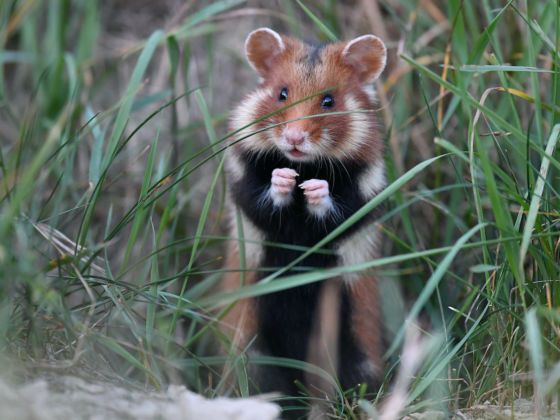Although typically known as cuddly pets, there are many wild hamsters species all throughout Europe, Asia, and the Middle East, and some are far from friendly. The European hamster, for example, will bite anyone who tries to touch it. Unfortunately for the feisty European hamster, however, a serious population decline has put it on the International Union for Conservation of Nature (IUCN) list as critically endangered.


The World’s Rarest Wild Hamster Is Now Listed as Critically Endangered
The possible causes for the population decline (itself due to falling reproduction rate and shorter lifespans) range from monoculture plantations that harm the species’ well-being by not providing proper nutrition, industrial development, global warming and light pollution.
The hamster’s population is down by 94 percent in France, and over 75 percent in Eastern Europe. If action isn’t taken, the IUCN believes the hamster will likely be extinct within 30 years.
While the European hamster may seem insignificant, they’re actually extremely important parts of the food chain. European hamsters are critical prey for the European red fox, large birds like the Eurasian eagle owl, and more. Losing the European hamster could result in declining populations of other species as well.
Mikhail Rusin, a researcher at Ukraine’s Kyiv Zoo, told National Geographic, “If we lose this species, the ecosystem could collapse [and affect human communities, too]. Some people think they’re disconnected with nature, but they’re not.”